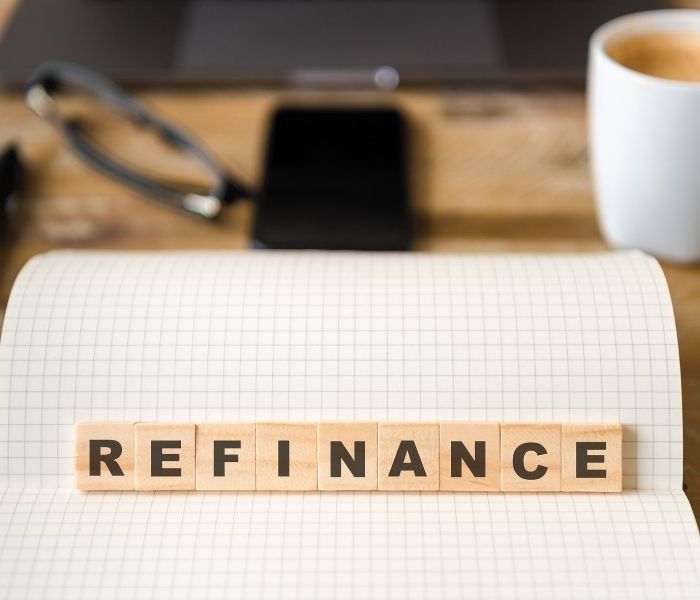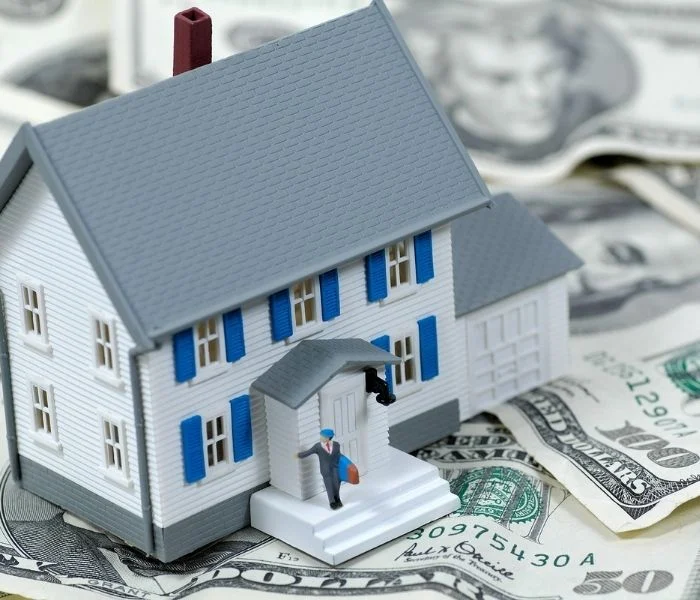Mortgage interest rates are at an impressively low rate. Is now a good time to refinance your home?
Truthfully speaking, it can be! When interest rates drop, refinancing becomes a hot topic for homeowners who are looking to save money and get out of debt faster.
You also want to consider how long you plan to stay in your home and whether you will really end up saving money or just break even. And even with a lower interest rate, you still might not save money.
So, is it time for you to think about refinancing? Here’s when you should start exploring your options:
Refinance When It Saves You Money

Last year, more than 17% of homeowners that had a mortgage on their primary residence refinanced. Interest rates were rock bottom, so it makes financial sense for most people regardless of their current rate.
The idea is that when you can get a lower interest rate, you end up saving money over the term of your mortgage because you pay less in interest.
Let’s say you have a mortgage for $150,000 with 20 years left on your term. Your interest rate is 4.5% and you want to refinance to one that’s 4%. Looking at nothing else besides these figures, you would pay about $77,754 in interest if you keep your current mortgage. Or, you could refinance to a loan that’s 4% and pay $68,153 in interest. That’s a difference of $9.601.
But refinancing often comes at a cost. The average closing costs of a refinance is about $5,000, which includes things like appraisal fees, credit report fees, title services, underwriting fees, and attorney fees, to name a few. You’ve already paid these fees once when you first bought your home.
Even ‘no-cost refinances’ aren’t free. Lenders are likely charging higher interest rates and rolling these costs into the loan, which will cost you more over time.
Also, your credit score might drop a little since refinancing means a hard inquiry into your credit score.
So, if you’re paying $5,000 in closing costs in the above example, you’re only saving about $4600 over 20 years. And if the drop in credit score affects your ability to get favorable terms for other credit, then a higher interest rate with other loans might eat up some of those savings.
A half a percent reduction in the interest rate isn’t usually something to get excited about. But every case is different, so do your homework to figure out just how much money you’re really saving.
Refinance When You Want to Pay Off Your Loan Faster
When interest rates drop, you might want to trade your current loan for one with a shorter term. Your payments might not change much, but you can pay off your home faster and get out of debt.
For example, if you have a 30-year term on a $200,000 house at 5.5% and you refinance to a 15-year term for 3%, then your payments jump from $1,136 to $1,381. It’s not a huge increase, but it cuts your term in half. The total cost of your mortgage (principle + interest) goes from $408,808 to $248,609.
Refinance if You Can Avoid Mortgage Insurance

Did you have to pay mortgage insurance when you first bought your house? If so, refinancing might save you money if you qualify.
Private mortgage insurance can add hundreds of dollars to your house payment each month. To make matters worse, many lenders make you hold onto PMI for at least two years before you can refinance. But once you are eligible, refinancing can help you build up home equity faster so you can shed this burden once and for all.
When you refinance at a lower rate, more of your monthly payment goes toward the principle of your mortgage. As you make progress on your principle, your home equity increases. And once you achieve at least 20% equity in your home (aka you’ve paid off a fifth of your home), you can ditch the PMI payments.
Bonus tip: put that extra money you’re not spending on PMI into extra mortgage payments to get out of debt faster!
Refinance to Change the Type of Loan You Have
My other favorite reason to refinance is to get into a better type of loan. There are a lot of bad loans out there, and people take them because their credit or other situations don’t allow them to qualify for better loan terms. For example, if you have an adjustable-rate mortgage and you are nearing the time when that rate might increase, you will be on the hook for more money.
Now would be a good time to look into fixed rate mortgages so your payments won’t fluctuate in the wrong direction.
You Can Refinance Other Types of Loans, Too!
Refinancing is usually a term reserved for mortgages. But you can use this same strategy to pay down other types of debt. For example, if your car payment has a high interest rate, you may be able to take out a personal loan or line of credit at a lower rate. Use that loan to pay off your car, then focus on repaying the loan while saving on interest. Same goes for credit cards: turn your high-interest credit accounts into low-interest personal loans so you make real progress toward paying off your debt instead of keeping lenders in business.
Questions? Want more financial-savvy tips? Visit our free online financial community, Credit Makes $ense!









